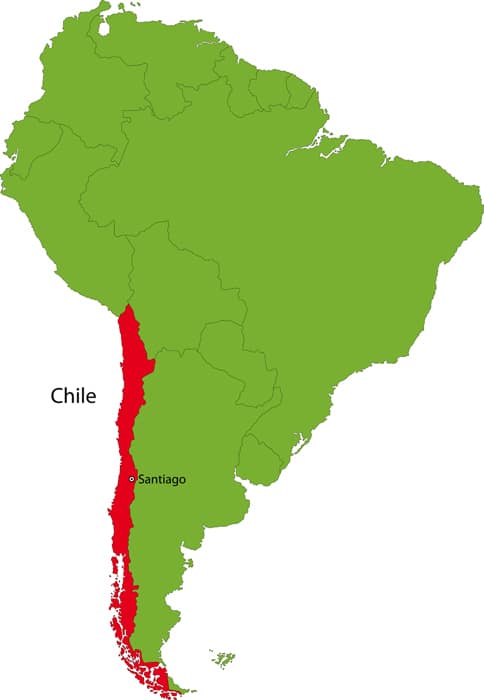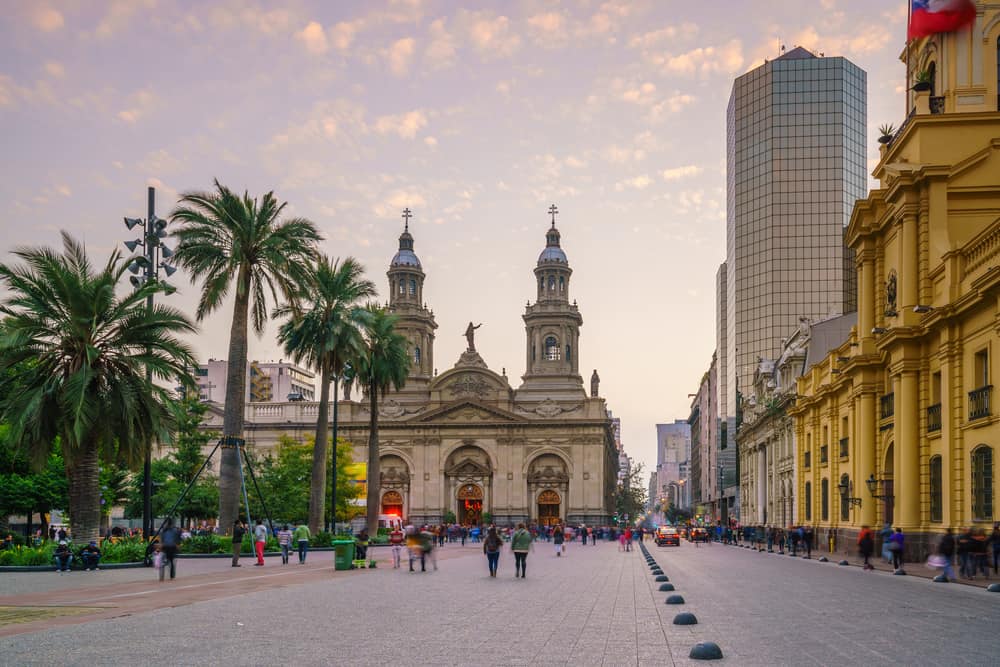
Santiago is the capital of Chile. It sits along the Mapocho river, in the foothills of the Andes Mountains, and has flourished through indigenous, Spanish, and independent rule. What is now a bustling metropolitan area was once a slow-growing establishment, and Santiago’s history speaks of innovation and perseverance.
The city is a beautifully crafted representation of decades of influence. Keep reading to learn how history, geography, and other factors shaped Santiago into one of the most prominent spots in Chile today.

History of Santiago
Santiago was founded in 1541 by Pedro Valdivia and a group of Spanish conquistadors on behalf of King Carlos I of Spain. Valdivia chose the city because it sat close to Cerro Santa Lucia, along the Mapocho River, and had a hospitable climate and fertile ground.
Before the Spanish took hold of the region, they had to face off with Inca and Picunche resistance. This came to a head with a final attack on Santiago on September 11, 1541. While both sides took heavy losses, it was only after the Spanish won the battle that they had a chance to settle in.
Santiago had a slow start. The early years are marked by a shortage of food and other essential supplies, and early colonists were always in danger of indigenous attacks and natural disasters. Because of its location, Santiago was prone to earthquakes and flooding.
The Rapid Growth of Santiago

Despite these obstacles, Santiago held strong and maintained the land until advancements in the 1800 connected the city to other regions and drained the ever-flooding southern arm of the Mapocho River.
Furthermore, the city was hardly affected by Chile’s War of Independence from 1810 to 1818. Santiago was named the republic’s capital that year, kick-starting a period of civic and educational growth.
The city received its first railways in 1857, and it quickly became a symbol of modern technology and wealth. Within the next century, nearly 1 million people, including Spanish and Italian immigrants, claimed the city as their own.
While Chile has suffered from the same periods of instability as its bordering nations, Santiago has prevailed and is now one of the largest cities in the Americas.
The Geography and Climate

Santiago is known for hot, dry summers that contrast more wet and mild winters.
Santiago’s location and surrounding structures feed into its wide-arching climate. The city sits nestled in the middle of the country, tucked away in a Mediterranean temperate valley and bordered by mountains on either side. In fact, the Santiago Mountain Region is home to 1,033 named mountains that shape its rugged terrain.
Winter rains and snowmelt in the watershed of the Maipo River supply water used for both power and domestic needs. Furthermore, these river canyons create beautiful recreation areas for Summer tourists and resorts for Winter visitors.
Tourists frequent this area not only for its large metropolitan reputation, but for the fact that they can visit the mountains and the coast in a single day.
The Economy of Santiago
Greater Santiago houses the greatest concentration of industries in Chile, predominantly:
- Foodstuffs
- Textiles
- Shoes
- Clothes
The region is also known for metallurgy and copper, gypsum, and limestone mining.
The greater Santiago area is a significant agricultural location. On top of dairy and beef production, the area produces major crops such as grains, grapes, beans, and potatoes.
Santiago’s financial sector contains its stock exchange as well as many major banks with international branches and insurance companies. The main line railroads that run through the city set it up as a major marketing hub as well.
Santiago’s Architecture and Design
While the city has a promising future, its true value lies in its historic roots. The historical architecture highlights several geographic, cultural, and social details that cannot be copied and pasted in another region.
Buildings in Santiago must have an earthquake proof structure, usually involving strong columns of concrete or steel and weaker beams that flex with the seismic energy. The tallest building, the Gran Torre, accomplishes this with diagonal supports and copper spring shock absorption in the base.
Santiago drips with Spanish influence, heavily noted in cathedrals, plazas, museums, and palaces. The gridded Plaza de Armas serves as a center point of this influence, surrounded by remarkable buildings like the Metropolitan Cathedral, Palacio de la Real Audiencia de Santiago, and Central Post Office Building.
On top of neoclassical influences in its architecture, Santiago also hosts a dense population of religious buildings. The design of these churches ranges from Romanesque to Spanish Baroque to more modern expressions of art.
Political strife has shaped some parts of the city, but the same is true for political perseverance. Recent advancements toward equality and social consciousness pushed for a greater number of public housing, and the result is a blend of modern solutions and historic highlights.
Santiago and Culture
Chile’s capital is a cosmopolitan blend of indigenous, European, and North American influences. Recent trends revisit Mestizo artisanship, as evidences in areas such as:
- Music
- Theater
- Artwork
- Literature
The city contains several museums and galleries that highlight the strife and history of the region, as well as Chile as a whole. The National Archives are a concentration of such exhibits.
Santiago strives on a sense of unity, whether that be in a shared history or a shared outlook on the future. Fiestas and public holidays are a major part of life in Santiago, and art thrives. Theaters and shows are not in short supply, and the region is marked with beautiful vineyards and craft markets.
The People of Santiago
Santiago is Chile’s largest city and has maintained a slow and steady population growth throughout the years. The majority of Chile’s population (almost 90 percent) live within 200 miles of the Santiago area.
The people in Santiago come from across the globe, but most have ancestors from Spain, France, Germany, Italy, and Croatia. Other large populations include indigenous communities and those from the Middle East and Korea.
Like the rest of Chile, Spanish remains the predominant language, but with certain nuances native to Chile. English comes a far second, but it’s more popular in Santiago than it is in other areas.Most Santiago citizens practice Catholicism (around 70 percent of the population), but smaller percentages practice other sects of Christianity.
While Santiago is very much its own city, it’s a great representation of the nation as a whole.
